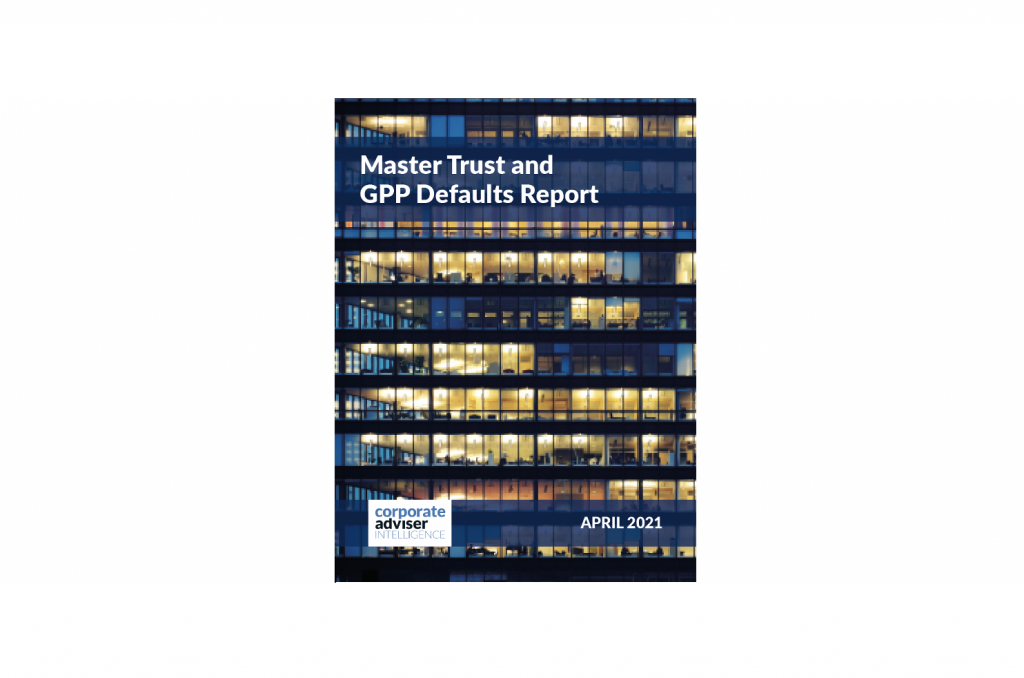A massive 46 per cent difference in return separates the best- and worst-performing growth phase pension default funds over the last five years, and the average default returned 6.09 per cent in 2020.
Figures from the Corporate Adviser Master Trust & GPP Defaults Report show LifeSight delivered an annualised return of 12.7 per cent in the five years to Q4, 2020, 6.44 per cent higher than the 6.26 per cent return from Standard Life’s principal default.
CLICK HERE TO DOWNLOAD THE REPORT
Standard Life says that its still substantial 6 per cent-plus return is ‘bang on target’ for the fund’s objective of targeting income replacement rates in retirement.
The difference in return between the best-performing and worst-performing at-retirement strategies is even greater – 10.65 per cent for the National Pension Trust versus Hargreaves Lansdown Workplace SIPP’s 0 per cent return, though these defaults’ objectives are very different. Hargreaves Lansdown’s approach is to ensure as many members as possible do not remain invested in the default. The Creative Pension Trust default achieved a pre-charge five-year annualised return of 0.56 per cent, while the Lewis Workplace Master Trust returned 1.16 per cent before charges.
Despite the economic damage wreaked by the Covid-19 pandemic, all default funds for savers with 30 years from state pension age (SPA) achieved positive returns before charges in 2020. National Pension Trust, a 100 per cent global equity fund, delivered a table-topping return of 12.54 per cent through 2020, while Royal London’s principal workplace default had the lowest return for this cohort at 0.71 per cent.
For savers with five years from SPA, National Pension Trust’s aggressive investment strategy saw it top the 1-year returns table again, returning 12.23 per cent before charges in 2020. Fidelity’s master trust default returned -0.7 per cent before charges over 2020, the only negative return across the survey.
The Corporate Adviser Pensions Average (CAPA) return for younger savers is 9.88 per cent annualised over 5 years, following the 6.09 per cent 2020 return. For five years pre-SPA, the 1-year CAPA average is 5.11 per cent, rising to 8.1 per cent annualised over five years. For funds serving savers 1 day before retirement, the 1-year CAPA average is 4.13 per cent, rising to 5.86 per cent annualised over five years. All figures are before charges have been deducted.
The Corporate Adviser Master Trust & GPP Defaults Report shows that the UK DC sector now sits at around £500bn, a staggering increase on the £398bn cited by the Pensions Policy Institute as recently as 2018. 15 master trusts now have default funds with more than £1bn in assets, up from 12 a year ago. Seven providers have less than £100m in their principal default fund, down from 10 a year earlier.
The report shows that Legal & General is the biggest DC provider by a considerable margin, representing almost a quarter of the entire DC market, with assets of £114bn. This is a near tripling of assets since September 2015 when its DC assets stood at £43.3bn.
There were 197 bulk transfers into master trusts took place in 2020, bringing in a total of £6.3bn of assets. LifeSight saw the biggest transfer values, with £2.1bn transferred across seven large schemes. One scheme, the Vodafone scheme, made up two thirds of that figure, in what is believed to be the single biggest DC scheme transfer in the UK. LifeSight was followed by Legal & General at £1.7bn, Fidelity at £500m and Aon at £419m.
Corporate Adviser editor John Greenwood says: “Once again, workplace pension defaults, in both master trusts and GPPs, have on the whole done a very good job for their members – benefitting fully from the rebound and ending 2020 on a high. No growth phase savers are going to feel let down, but some will be happier than others – and the differential in returns will sustain the debate over whether all-out growth is the best way forward for younger savers.
“The report does however show greater disparities in outcome as investors get closer to retirement. While this might be expected given the different audiences served by different master trust and GPP defaults, work clearly needs to be done to make sure pre- and at-retirement savers are invested in an investment strategy that is right for them.
“What we also see from the report is the continued acceleration of scale across DC, supported by contributions, transfers and investment growth.”
